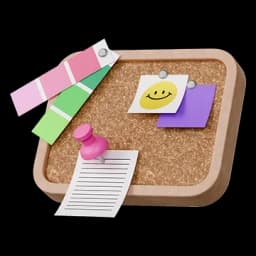Hello! My name is Juan, and I'm a Brazilian student from Campo Grande, Mato Grosso do Sul. This is the story of my journey to Brown University!
My background
I studied at Colégio Dom Bosco, a traditional school in my city, Campo Grande. I was a student there since 2nd grade, and the people I met there were very supportive of all my dreams throughout my academic journey. However, despite the strong foundation, the idea of studying abroad was not something considered by anyone at the time.

Why Study Abroad
My dad was always a very adventurous person, and one day in senior year, he brought up the idea of studying abroad. He had a friend whose daughter was studying at Georgia Tech, and he arranged for me to talk to her. At first, I thought the idea was absurd—I didn’t think I was good enough to study abroad. But after speaking with her, my perspective started to change. The idea began to grow on me, and I started thinking, "Why not try?"
The first thing that really caught my attention about studying abroad was the opportunity to pursue an interdisciplinary approach to learning. In my school, the curriculum was quite challenging, but it was also very rigid—everyone had to study the same subjects. I wanted more freedom to build my own curriculum and explore the subjects that genuinely interested me. Another aspect was that my oldest sister had studied in Tennessee for a year when she was 15. When she returned, she shared so many incredible experiences with us that it really sparked my interest in studying abroad. However, when I turned 15, the pandemic hit, and I couldn't go. Despite the setback, I didn’t let go of the idea. Instead, I started exploring other possibilities for studying abroad, hoping that the opportunity would eventually come.
The final turning point for me came when I entered university in Brazil—where I studied Psychology for 2 months, a time that, although not enough to even make me a transfer student, taught me a lot about myself—after high school. One of my professors said that school brought together people with similar interests and mindsets, and that the university phase often brought more humane and academic diversity to students’ lives. I remember hearing that and feeling disappointed because I still didn't feel like I was experiencing enough diversity—especially when it came to the curriculum, seeing as we study only one major at Brazilian universities. I didn’t want to study in a homogenous environment—I wanted to meet people from all over the world, with diverse perspectives and passions. I longed for opportunities to interact with individuals who challenged my views and broadened my horizons, not just those who thought like me, and integrate those novelties with my learning experience.
Psychology & Education: The path to unlocking my power
When I was 5 years old, I was diagnosed with giftedness. During the first five years of my life, I lived in Ponta Porã, where my public school teacher gave me a lot of freedom and support during 1st grade. However, when my family moved to Campo Grande, I didn’t have as much specific support. The only adjustment they made was keeping me one grade ahead. I struggled to connect with my peers and had a hard time dealing with my emotions because I wanted to grow as fast as possible to study more and more—even though the children were welcoming, I felt like I was more similar to older people, as I didn't like playing games, and I couldn't properly deal with differences at the time.
After ten years of many ups and downs, my mother found CEAM (a statewide Multidisciplinary Service Center for Gifted Students), and I started taking special classes there. There, I participated in activities outside of school with other gifted students. It was in this environment that I began to discover a deep interest in helping others who were facing challenges like those I had faced. Being surrounded by people who shared my experiences made me feel understood, and it inspired me to pursue ways I could support others with similar struggles.
Why Brown
The main factor that made Brown unique to me was Brown's Open Curriculum. Unlike other schools, Brown didn’t have mandatory requirements, giving students complete freedom to shape their own academic paths. This flexibility really appealed to me because it aligned with the way I wanted to learn—choosing subjects that sparked my curiosity and passion. Another aspect that stood out was how Brown's teaching approach was very similar to what I experienced at CEAM. It emphasized critical thinking, exploration, and interdisciplinary learning, and I absolutely adored that.
Moreover, the Brazilian community at Brown really stood out to me. They were incredibly welcoming and made me feel like this could be a place where I truly belonged. Their support reassured me that Brown would provide the kind of environment I was looking for.
Finally, I was also drawn to the unique classes that Brown offers. For example, they have a course on affective neuroscience, which is really specific and aligns with my interests. The variety of courses offered was exciting because it showed me how diverse and specialized my education could be. On top of that, Brown has a wide range of clubs that allow students to explore their passions outside the classroom. I was especially intrigued by a creative writing club named “WHO'S FRANK?” and Splash, a program where students give lectures about any topic of their interest to other students. This kind of student-driven initiative made me realize that Brown would give me the freedom to express myself in the most creative and unconventional ways.
Brown really convinced me that I could bring my true self to university, even in the weirdest, most unique ways possible—and that was exactly what I wanted in a university experience.
Stats and Tips
I had a 1560 SAT score, with 760 in English and 800 in Math. My GPA was 9.988 out of 10, and I was ranked first out of a class of 70 students. Additionally, I took the Duolingo English Test and scored 140 out of 160.
My biggest tip is to really focus on the areas where you struggle. For example, I scored 800 on my first SAT math section, so I knew math wasn’t my biggest challenge. Instead, I concentrated on improving my English. The same approach applied when I took the DET. I struggled with the speaking section, so before each practice test, I made sure to only think in English. This helped train my brain to process the language more naturally and fluently under test conditions.
Extracurriculars
My first significant extracurricular activity was with the student group at CEAM. I had the opportunity to tutor over 25 students. Additionally, I assisted the four coordinators in the creation of a tool that helped bring over 50 new students to CEAM. This tool introduced a deep psychological analysis that's not often done in Brazil—stigmatization of giftedness is still very common, which leads many professionals to operate using shallow and harmful procedures such as reducing giftedness to IQ—, which made it especially impactful and innovative in helping the center grow and reach more students.
My second major activity was writing and publishing a book called "Letters to a Platonic Love". (“Cartas a um amor platônico” in Portuguese). The book has 52,000 words and sold 3,000 copies, which was a huge milestone for me. Initially, I self-published it, but eventually, I signed a contract with Ipê das Letras, an international publishing house.
The third activity is my involvement in a Facebook group called "Gibiteca", which is the largest Brazilian Facebook group dedicated to comics. In this group, I initiated numerous discussions, contributed thoughtful comments, and generated over 20,000 reactions. I also shared over 200 stories for public reading, which sparked engaging conversations and helped build a vibrant community around comics.
My fourth activity was running a literary Instagram called Sweet and Sour Needle. On this platform, I wrote over 62 texts, totaling 28,000 words. Some of my posts even received up to 20,000 views, giving more than 100,000 total views to the account.
My fifth activity was working at my dad’s educational company, where I started as Content Revisor and then became the Technology Manager. After my father’s passing, I began taking on more responsibilities to help my oldest sister run the business. Over time, I also became responsible for the financial aspects of the students, including tasks like managing payments, correcting their texts, and other administrative duties.
My sixth activity was doing house chores. I included this because I spent over 20 hours a week for 50 weeks helping out around the house. Since everyone else in my family was working, I took on a large part of the household responsibilities, which allowed me to contribute significantly to the daily functioning of our home.
In total, I had twelve activities on my Common App list!
My Personal Statement & Embracing Imperfection
My personal statement was about how I used to believe that perfection was the key to being loved and that I thought that if I could be flawless, others would appreciate me more. This belief led me to develop a story about myself—one where I had to avoid mistakes at all costs.
Over time, however, I learned that I could challenge this story and rethink how I valued myself. I began to see that I didn’t have to be perfect to be worthy of love. One turning point was my newfound love for painting. I knew I wasn’t good enough at it to put it as an activity in my application, but I realized that I didn’t need to achieve perfection in my art to enjoy it, as the process itself was relaxing. I could appreciate the process itself, and that in itself was fulfilling. This realization taught me a valuable lesson: I didn’t have to be flawless to find joy in something.
Through this process, I deeply learned that it was okay not to excel in everything I did. We all have different levels of passion and commitment for the various activities we engage in, and that’s perfectly fine. Life is not about being perfect in everything—it’s about finding meaning in what you enjoy and accepting that it’s okay to be imperfect. Happiness can be found in the simplest things, like my colorful Converse sneakers collection.
In the end, I no longer chased perfection, focusing on the joy that comes from embracing who I am and the small, meaningful moments in life instead.
Final Thoughts
As much as my final preparation took nearly six months, I've been crafting my application since 2022. Through the ups and downs, 2024 has been my second—and final—gap year, but it also brought the culmination of my efforts: my acceptance with a full ride in my dream school!









